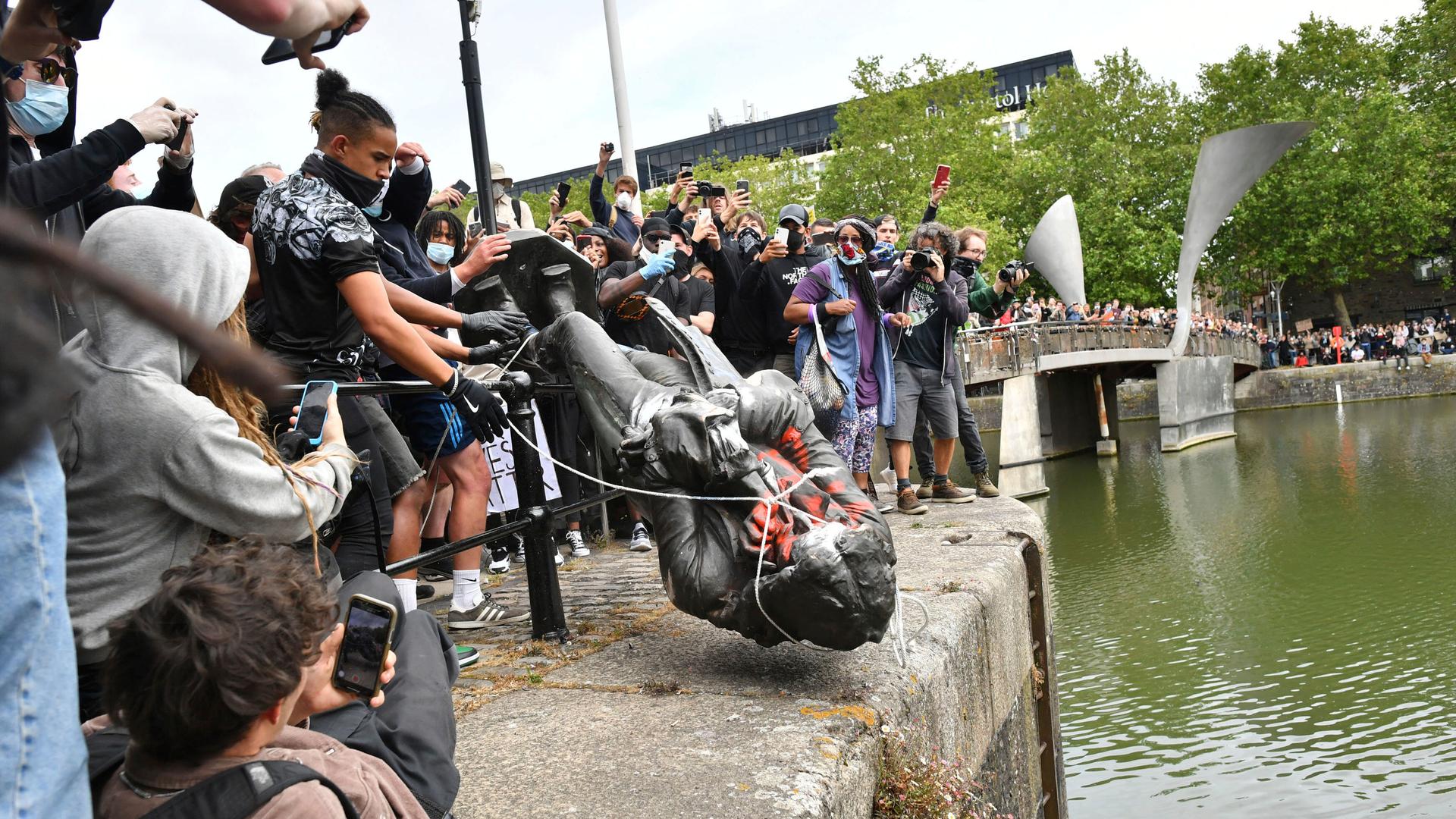Statues celebrating ‘icons’ who helped create a racist system, perpetuate the racist system.
I remember watching the statue of Saddam Hussein being toppled in 2003 on the news. Years later, when I was older, I was able to understand the historical and political significance of that one act alone.
The toppling of the statue of Saddam Hussein, with an American flag around its face, in Baghdad had a powerful meaning behind it. It sent a message to the world that the coalition forces, precisely the United States, had liberated the Iraqi people, and “democracy” was being delivered as promised by President Bush.
The sentiment was reciprocated by civilians who could be seen in the footage cheering and clapping. You hear an Iraqi man saying in Arabic “come see; this is freedom, this is the criminal, this is the infidel, this is the destiny of every traitor, he killed millions of us. Oh, people, this is freedom.”
The toppling of his statute was a historical moment for those who had lived and suffered under Saddam’s regime. It was a moment of recognition that their oppressor had finally been bought down.
The western world has erected many statues to commemorate figures in history that engaged in countless atrocities.
However, it becomes an intriguing dilemma when the statues of those erected were slave owners, racists and were responsible for untold misery and pain.
In light of the Black Lives Matter movement in the United Kingdom, we saw the statue of Edward Colston pulled down in Bristol and thrown into the river.
This timely display of defiance brings a new dimension to the conversation surrounding racism in the UK and the rest of the Western world.
Edward Colston was a British slave trader, who was part of the Royal African Company that was involved in the trading of slaves along the West coast of Africa from 1680-1692. It is estimated that he enslaved 84,000 African men, women and children, of whom 19,000 died on their journey to the Caribbean and the rest of the Americas.
This destruction of his statue has led many to accuse the protestors of “vandalism” labelling their actions “illegal”. The Home Secretary Priti Patel stated that the toppling of the statue of Edward Colston in Bristol was “utterly disgraceful” and ‘undermines’ anti-racism protests.
Her statement is dismissive of the emotional attachment people have with the image due to its history of slavery, furthermore, illustrating just how far away the UK is from properly confronting its involvement in the slave trade.
The discussion no longer revolves around whether or not it’s vandalism or illegal. Instead, it’s about the message the statue sends to the descendants of slaves, those from Britain’s former colonies, the victims of racism and the general ignorance towards the UK’s involvement in the slave trade.
In 2018, it was agreed upon that the statute of Edward Colston would bear a plaque stating his involvement in the slave trade.
However, disagreements on how this was to be worded arose; eventually, the first plaque that was attached declared “erected by citizens of Bristol as a memorial of one of the most virtuous and wise sons of their city.”
There was no mention of slavery, later on, in 2018, Bristol Council revealed the wording for the second plaque, “As a high official of the Royal African Company from 1680 to 1692, Edward Colston played an active role in the enslavement of over 84,000 Africans (including 12,000 children) of whom over 19,000 died en route to the Caribbean and America.
Colston also invested in the Spanish slave trade and slave-produced sugar. As Tory MP for Bristol (1710-1713), he defended the city’s ‘right’ to trade in enslaved Africans. Bristolians who did not subscribe to his religious and political beliefs were not allowed to benefit from his charities”.
Despite this, there were still reservations and objections on what would be written on the plaque with alterations being made repeatedly either negating his involvement in the slave trade or downplaying it. This is just one of many reasons why the discussion is no longer about whether statues should be erected or whether protesters have committed an offence by uprooting it; instead, it’s the refusal to acknowledge the oppression and cruelty that these figures participated in.
I can hardly begin to think of any form of justification for wanting to preserve the statute of a man that symbolises the slave trade or to a larger extent, systematic racism in the UK.
No one would justify creating a commemoration of a rapist outside a victim’s house or a statue of the devil in a church as this would be seen as abhorrent and wrong.
This is exactly the same reason that the statues of Saddam Hussein, Lenin or Hendrik Verwoerd were demolished, and it is also the same reason why today Western countries should begin the process of confronting their history with the removal of statues of men and women who were involved in upholding and spreading their racist and imperialist ideologies around the world, as they bear a very real reminder to many who have felt the consequences of their actions.
This not only allows a dialogue to take place, but it’s also one of the first steps into healing and uniting a fractured nation on the topic of racism and inequality. There has to be political will from MPs and world leaders to educate the public in these matters, and this should begin by restructuring school curriculums.
Author: Franc Kunda
Franc Kunda is a British-Congolese researcher and has an MSc in Violence, Conflict and Development at SOAS University of London.
Source










Discussion about this post